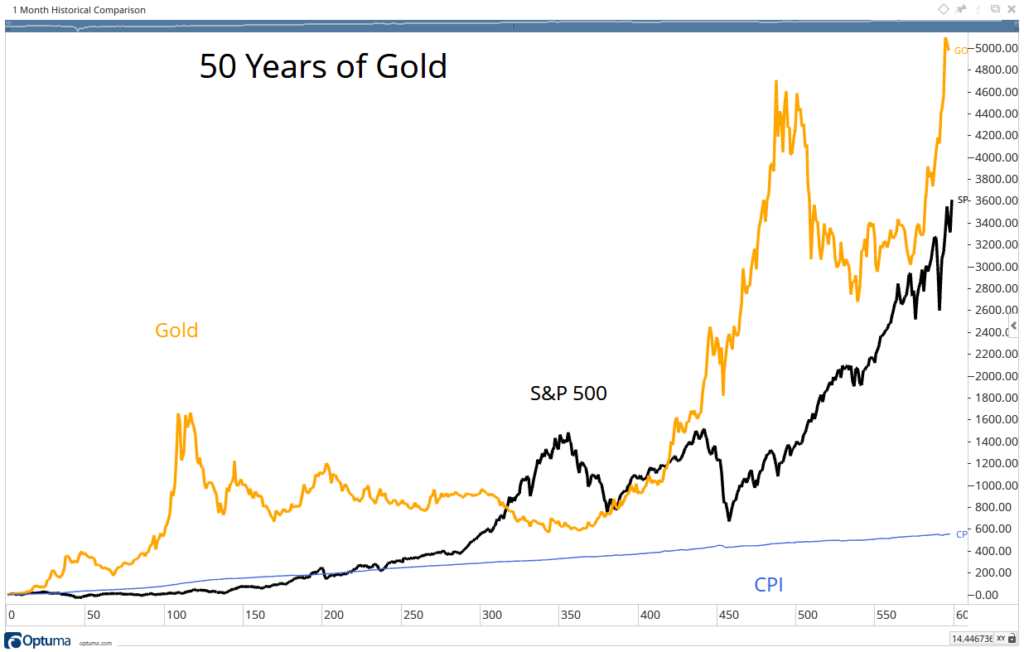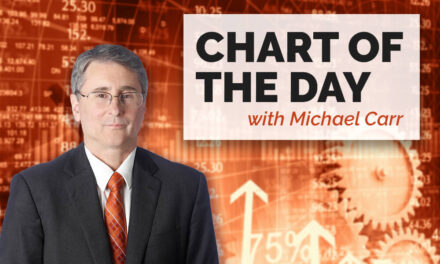It’s the great gold vs. stocks debate.
For thousands of years, gold was money. Officially, that all changed in 1971.
On August 15, President Richard Nixon gave a speech to the nation announcing a new economic policy. Nixon ended the ability of foreign governments to redeem dollars for gold, turning the international monetary system into a world made of paper.
The full meaning of this announcement would take decades to understand. In fact, we still don’t understand all the implications, especially the impact of fiat money on sovereign debt.
But we do know that gold became an investment asset in 1971. The chart below shows how gold performed relative to the S&P 500 Index since January 1, 1971.
Gold Beats S&P 500 in Last 50 Years

Source: Optuma.
In this chart, the value of gold, the S&P 500 and the CPI are indexed to 1 at the beginning of 1971. This is the price data for the S&P 500, excluding dividends. Over the long run, gold has been the better performer.
Both investments handily beat inflation (the blue line). The small increase in inflation is likely due to measurement problems in the Consumer Price Index (CPI).
Gold vs. Stocks: The Next 50 Years
Of course, over different time frames, gold has underperformed stocks. But this chart shows that Nixon changed the world when he took the United States off the gold standard. Prior to that, the price of gold was fixed.
From 1934 until 1971, the United States valued gold at $35 an ounce. Because the U.S. dollar was worth about 0.03 ounces of gold, the price of gold in London moved within a narrow range.
Throughout the 1950s, for example, gold traded between $34.85 and $35.17 in London. When gold moved outside that band, central banks stepped in because there was a chance to profit as the U.S. gold window opened.
Nixon changed that. When looking at gold vs. stocks, the yellow metal has moved from $35 an ounce to almost $2,000 in 50 years, providing an average gain of 8.8% a year to long-term investors. In the same timeframe, the S&P 500 gained an average of 7.6%.
With dividends at a record low, gold could be investors’ best choice for the next 50 years.
Michael Carr is a Chartered Market Technician for Banyan Hill Publishing and the Editor of One Trade, Peak Velocity Trader and Precision Profits. He teaches technical analysis and quantitative technical analysis at the New York Institute of Finance. Mr. Carr is also the former editor of the CMT Association newsletter, Technically Speaking.
Follow him on Twitter @MichaelCarrGuru.





